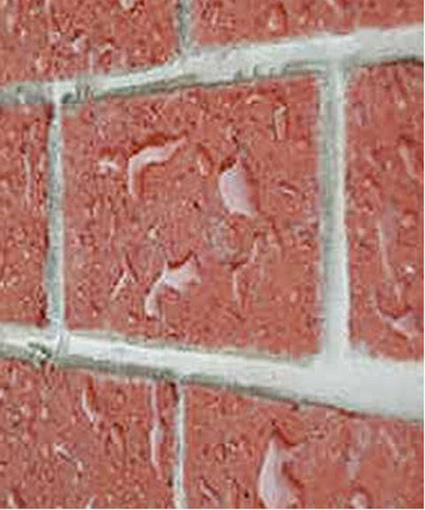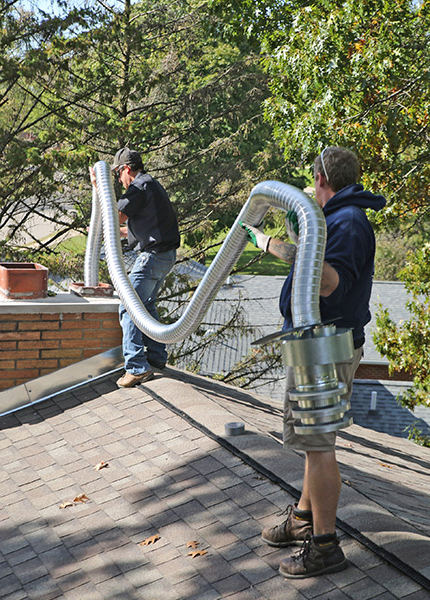Why is My Chimney Sweating? – Chimney Leaks
 If you’ve noticed dampness on the bricks and mortar of your chimney or the inside walls of your home adjacent to the chimney, you are probably dealing with chimney sweating. Dampness can also be the result of a leaky roof, so that needs to be ruled out before addressing a chimney sweating issues.
If you’ve noticed dampness on the bricks and mortar of your chimney or the inside walls of your home adjacent to the chimney, you are probably dealing with chimney sweating. Dampness can also be the result of a leaky roof, so that needs to be ruled out before addressing a chimney sweating issues.
There are two reasons for a chimney to sweat: normal condensation, and leaks in the chimney structure.
Normal Chimney Condensation
You’ve probably seen condensation on the outside of a glass of very cold liquid, making it look like the glass is sweating. The same thing can happen with your chimney. When it’s cold outside and the warm, humid air inside the home contacts the cold walls of the chimney, the warm air will condense on the cold surface and result in dripping.
The sweating in this case is normal and will cease once a fire is built and the chimney heats up.
Leaks In The Chimney Structure
A condensation effect also can happen within the chimney itself. When a fire is started, the new warm air moving into the chimney comes into contact with the cold chimney walls, causing condensation. In some cases, the heat from the fire will cause the condensate to evaporate. In other cases, the fire’s heat may not be enough to get rid of the water.
If water remains in the chimney at times when no fire is burning, it can freeze. When water freezes, it may eventually damage to the chimney structure through cycles of freezing and thawing. The porous materials of bricks are particularly subject to damage by freeze/thaw cycles. Once cracks are formed, water will spread from inside the chimney to the outside.
In addition to the repeated freezing and thawing of water inside the chimney, damage also can happen when exhaust chemicals from a fire mix with water from condensation. The result is a corrosive mix that is capable of causing deterioration to the chimney structure.
Repairing Chimney Structural Damage
While you likely can spot dampness on chimney bricks or walls near the chimney, it’s unlikely you’ll be able to properly assess the extent of the damage, assuming there is any. With any sweating chimney, a professional chimney sweep should be called in to perform a thorough inspection. The technician then can make any repairs necessary to avoid further damage and dangerous operating conditions.
How To Prevent Chimney Sweating
 Chimneys that don’t have a quality flue liner are more prone to sweating. If you’re running your fireplace without a chimney liner, consider having one installed. Liners isolate the air inside the chimney from the chimney walls, resulting in slower cooling of the walls and less production of condensation on the outside of the chimney.
Chimneys that don’t have a quality flue liner are more prone to sweating. If you’re running your fireplace without a chimney liner, consider having one installed. Liners isolate the air inside the chimney from the chimney walls, resulting in slower cooling of the walls and less production of condensation on the outside of the chimney.
What we’ve outlined here are the common reasons for chimney sweating. The only way to know for certain exactly what’s happening throughout the chimney structure is to have the entire system inspected.
If you’re experiencing some chimney sweating and want to know the specific cause and if any repair measures need to be taken, call the experts at Chimney Specialists of Highland WI. We can help with every aspect of cleaning, repair, inspection and maintenance of your chimney and fireplace. Reach us by phone at (608) 929-4887.







